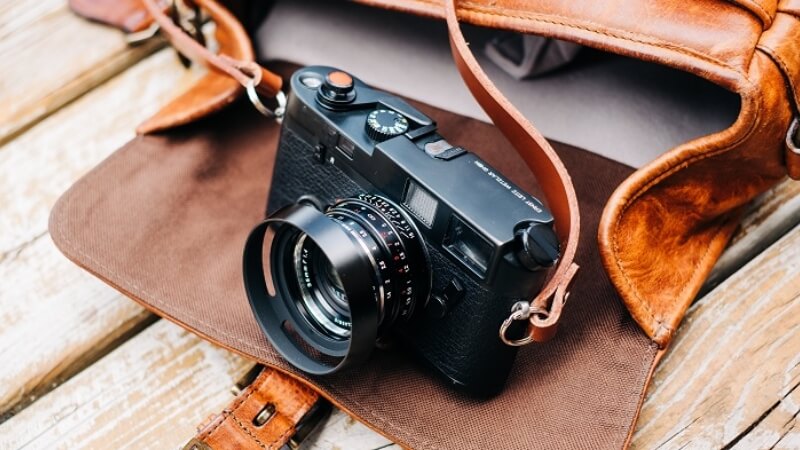
How To Keep Your Camera Strap From Fading
Within the first few moments of embarking on a photographic journey, your camera strap not only becomes a part of your gear but also an

The moment you sling that stylish leather camera strap over your shoulder, you’re not just carrying a camera; you’re making a statement.
But could this fashionable choice be a hidden culprit behind skin allergies? Let’s delve deeper into the world of leather and skin sensitivities, and uncover what photographers need to know.
In this section, we delve into the intricate process of leather production and its implications for allergies, focusing on the chemicals involved in tanning and their potential effects on sensitive skin.
Leather, a mainstay in the world of high-end photography gear, is crafted through a meticulous process.
Tanning, the core of leather processing, transforms animal hides into durable, flexible material prized by photographers.
This process, however, often involves a cocktail of chemicals, from natural tannins to synthetic agents, each carrying potential allergenic properties.
The sophistication of a leather camera strap comes at a cost. The chemicals used in tanning leather, such as chromium salts, dyes, and formaldehyde, can lead to allergic reactions.
These allergens can linger in the leather, posing a risk to sensitive users. The degree of processing and the quality of the leather can significantly impact the prevalence of these allergens.
Here, we explore how to recognize and diagnose leather allergies, from common symptoms to professional testing methods for accurate identification.
A leather allergy can manifest in various ways, most commonly through contact dermatitis.
This condition results in symptoms such as itching, redness, swelling, and even blistering where the skin has been in contact with the leather camera strap.
These symptoms are the body’s immune response to the allergens present in the leather.
Identifying a leather allergy involves careful observation and medical consultation.
A dermatologist can conduct patch tests, exposing the skin to small amounts of various substances found in leather to pinpoint the exact cause of the allergy.
This diagnosis is crucial for photographers who frequently come into contact with leather products.
In this segment, we evaluate the likelihood and intensity of allergic reactions to leather, considering various factors like leather type and individual sensitivity.
While not everyone who uses a leather camera strap will experience an allergic reaction, the risk is present.
The frequency and severity of reactions vary based on individual sensitivity and the type of leather.
Some people might experience mild irritation, while others could have severe reactions requiring medical attention.
Not all leather is created equal. The source of the hide, the tanning process, and the final treatment can all affect allergenic potential.
Full-grain leather, often used in high-quality straps, typically undergoes less chemical treatment, potentially reducing allergenic compounds.
Conversely, cheaper, heavily processed leathers might pose a higher risk.
Next, we delve into effective strategies for preventing and managing leather allergies, offering practical tips for both avoidance and treatment to ensure the comfortable and safe use of leather camera straps.
Prevention is key in managing leather allergies. Choosing a leather camera strap made with minimal chemical processing or coated with a hypoallergenic sealant can reduce the risk.
Additionally, photographers can opt for straps lined with a non-allergenic material, providing a barrier between leather and skin.
Once an allergy is identified, managing it becomes a priority. This may involve switching to a non-leather strap or applying protective coverings to the leather.
For those experiencing mild reactions, over-the-counter antihistamines or topical corticosteroids can provide relief. In more severe cases, a physician’s guidance is recommended.
In response to growing concerns about allergies, the photography accessory market has expanded to include a variety of non-leather options.
High-grade synthetic leather offers a similar look and feel without the allergenic properties.
Other materials, such as woven fabrics or high-quality canvas, provide comfort, durability, and a unique aesthetic, appealing to photographers looking for both style and functionality.
For those who can not part with the classic look of leather, allergy-friendly leather products offer a solution. Treated with less aggressive chemicals and often tested for allergenic properties, these products aim to provide the luxury of leather without the risk of skin irritation.
In the intricate dance of photography and fashion, the leather camera strap plays a crucial role. However, its potential to cause allergic reactions cannot be ignored.
By understanding the materials, recognizing symptoms, and exploring alternatives, photographers can make informed decisions that align with both their aesthetic and health needs.
Whether you choose traditional leather, a hypoallergenic alternative, or a completely different material, the right camera strap should be as comfortable on your skin as it is pleasing to your eye.
After all, the best photography comes when you are at ease with your equipment, both functionally and physically.
This exploration into the world of leather camera straps and allergies aims to empower photographers to make choices that enhance their art while safeguarding their well-being.
Q1: Can wearing a leather camera strap in hot and humid conditions increase allergy risks?
A1: Yes, hot and humid conditions can amplify the risk of allergic reactions. Sweat can act as a conduit, increasing skin absorption of potential allergens from the leather. It’s advisable to limit prolonged exposure under these conditions or choose a strap with a hypoallergenic lining.
Q2: Are there specific colors of leather that are more likely to cause allergies?
A2: Darker colored leathers may pose a higher allergy risk, as they often require more dye and chemical treatment. If you’re sensitive, opting for natural or lightly colored leather might reduce the chance of an allergic reaction.
Q3: How long does it typically take for an allergic reaction to leather to subside?
A3: The duration of an allergic reaction can vary greatly depending on its severity and the treatment used. Mild reactions might subside within a few days of avoiding contact with the allergen, while more severe reactions could take longer and might require medical treatment.
Q4: Is it safe to use a second-hand leather camera strap if I have sensitive skin?
A4: Using a second-hand leather strap can be a gamble for sensitive skin. While some allergens might diminish over time, you can’t be certain of the strap’s chemical history. It’s generally safer to use a new strap where you have full knowledge of the materials and treatments used.
Q5: Can applying a protective coating to a leather camera strap reduce allergy risks?
A5: Yes, applying a protective coating to a leather camera strap can create a barrier between the skin and potential allergens, reducing the risk of an allergic reaction. However, it’s important to ensure that the coating itself is hypoallergenic and safe for your skin.


Within the first few moments of embarking on a photographic journey, your camera strap not only becomes a part of your gear but also an

The moment you sling your camera strap over your shoulder, it becomes more than an accessory; it’s your camera’s lifeline, a bridge between you and

When it comes to photography gear, the camera strap might not be the first thing that springs to mind. Yet, this humble accessory is the

Your camera strap might seem like a small part of your photography gear, but it’s the lifeline that keeps your precious camera from taking a

Within the first few moments of embarking on a photographic journey, your camera strap not only becomes a part of your gear but also an

The moment you sling your camera strap over your shoulder, it becomes more than an accessory; it’s your camera’s lifeline, a bridge between you and

When it comes to photography gear, the camera strap might not be the first thing that springs to mind. Yet, this humble accessory is the

Your camera strap might seem like a small part of your photography gear, but it’s the lifeline that keeps your precious camera from taking a
Copyright © 2024 photocamerastrap. All Rights Reserved.